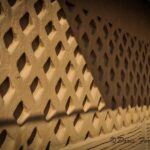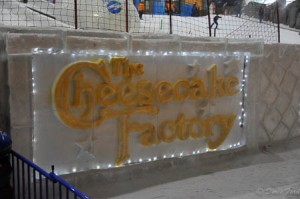Chan Chan
Review the map on the Post of March 24th 2012 for the route taken for the South American trip.
The largest Pre-Columbian city in South America, Chan Chan is an archaeological site located in the Peruvian region of La Libertad, five km west of Trujillo. Chan Chan covers an area of approximately 20 km² and had a dense urban center of about 6 km². Chan Chan was constructed by the Chimor (the kingdom of the Chimú), a late intermediate period civilization which grew out of the remnants of the Moche civilization. The vast adobe city of Chan Chan was built by the Chimu around AD 850 and lasted until its conquest by the Inca Empire in AD 1470. It was the imperial capital of the Chimor until it was conquered in the 15th century. It is estimated that around 30,000 people lived in the city of Chan Chan.
Chan Chan was added as a UNESCO World Heritage Site on November 28 of 1986. The city is severely threatened by storms from El Niño, which cause heavy rains and flooding on the Peruvian coast. It is in a fertile, well-watered section of the coastal plain The city’s ruins are additionally threatened by earthquakes and looters. Present-day visitors to Chan Chan can enter the Tschudi Complex, believed to be one of the later citadels built in the city. There are also several other Chimú and Moche ruins in the area around Trujillo. This site was discovered by the Conquistador Francisco Pizarro.
The city is composed of ten walled citadels which housed ceremonial rooms, burial chambers, temples, reservoirs and some residences. Chan Chan is a triangular city surrounded by walls 50–60 feet high. A distinguishable aspect of Chan Chan is that there are no enclosures which open to the north. The tallest walls shelter against south-westerly winds from Peru’s coast. Northern-facing walls gain the greatest exposure to the sun, serving both to block the wind and absorb sunlight where fog is frequent. The numerous walls throughout the city create a labyrinth of passages.
The walls themselves were constructed of adobe brick and were then covered with a smooth surface into which intricate designs were carved. There are two styles of design present in these carvings: one is a ‘realistic’ representation of subjects such as birds, fish, and small mammals; and the other is a more graphic, stylized representation of the same subjects. The carvings at Chan Chan depict crabs, turtles, and nets for catching various sea monsters. 
Chan Chan, unlike most other coastal ruins in Peru, is located extremely close to the Pacific Ocean. In 1998, The “Master Plan for Conservation and Management of the Chan Chan Archeological Complex” is drawn up by the Freedom National Culture Institute of Peru with contributions from the World Heritage Foundation – WHR, ICCROM and GCI. The Plan is approved by the Peruvian Government, with involvement at the highest levels up until today.
From Wikipedia
http://whc.unesco.org/en/list/366



























